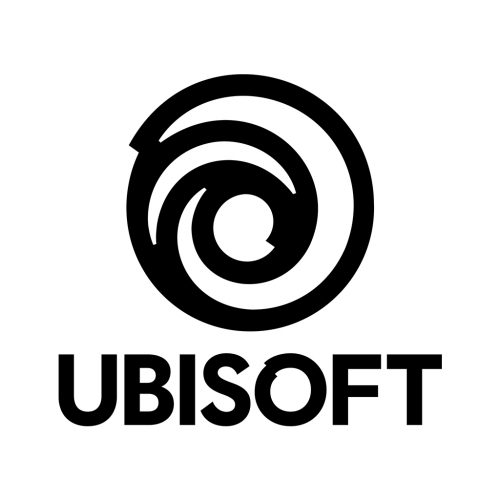Winning at XDefiant? It’s all about teamwork. It’s pretty much the same deal when it comes to making a video game. Working together is what makes things click.
While Ubisoft San Francisco steered the XDefiant project, did you know that this ambitious venture also tapped into the creativity of talents from all corners of the globe, including folks at Ubisoft’s Saguenay, Toronto, and Winnipeg studios?
Despite language barriers, job titles, and distances, a bunch of talented people from our Canadian studios hopped on board as co-dev partners.
Together, they breathed life into Ubisoft’s latest multiplayer shooter, lending a hand to the San Fran team on everything from dreaming up characters and designing maps to fine-tuning sounds, smoothing out the gameplay, and adding special effects.

The many talents behind XDefiant
Take Bianca Brassard from Ubisoft Saguenay. As a level artist, she and her colleagues turned XDefiant’s bare-bones maps (think grey blocks and nameless corridors) into dynamic arenas, reflecting the game’s factions.
“We build the environments according to the needs of the level designers, making sure that they’re not only exhilarating to play in but also visually stunning. We’re in charge of the beauty, and our designer pals are in charge of the fun,” Bianca explains with a playful grin.

Bianca worked on maps like Echelon HQ (inspired by Splinter Cell) and Attica Heights (a nod to Ghost Recon).
Over at Ubisoft Toronto, character artist Rag Premji—known for his exceptional 3D models for Ubisoft’s hits—got to add his creative touch to XDefiant’s look.

“I worked on XDefiant for over a year with the San Francisco team and was tasked with updating the characters in the Echelon faction,” he describes. Working with the game’s artistic directors, he cooked up all sorts of cool stuff, from headgear to textures.
Giulia Santin, also based in Toronto but dabbling in a totally different realm, applied her progression design expertise to the game.
“I focus essentially on retention by trying to find ways of getting players to continue playing the game. Another aspect of our job as progression designers is to make sure that players feel they’re improving and making progress throughout the game,” she says.

For XDefiant, Giulia whipped up a bunch of challenges for players who go with the Echelon faction, straight out of Splinter Cell lore. From daily tasks to long-term quests, these challenges play to Echelon’s unique skills and unlock some seriously cool stuff.
But what’s all that without a slick experience? Enter Jesse Marofke, a technical artist from Ubisoft Winnipeg. Describing himself as a bridge “between coding, art, and production,” he’s one of the guys (along with his crew) we can thank for the performance and optimization work done on the game’s maps.

“My day often consists of testing the performance of new and existing maps and their associated assets, and offering or implementing possible solutions to optimize them,” he says.
So, there you have it—four collaborators, four wildly different worlds. This is just a glimpse of the Canadian talent that pieced together XDefiant!
Communication: the cornerstone of co-development
When you’re backing up buddies in San Francisco while working with teams from Canada and all over the globe, some skills are just essential.
Ask Jesse, Giulia, Rag, and Bianca about those must-haves, and they’ll all say the same thing: communication is a game changer!

“It’s really important to express yourself well, especially verbally. If you’re working with someone in the same studio as you, it’s a lot easier to be like ‘let’s go to a meeting room, and I’ll draw you a picture.’ On the other hand, it’s a lot harder with co-development! I can’t just fly over to San Francisco and show you on your computer how to do it. So, it’s essential to communicate well and do a lot of knowledge transfer,” Giulia emphasizes.
Bianca agrees, noting the importance of solid communication for sharing knowledge, tips, and intel.
“There’s a tonne of back-and-forth that makes things click and even boosts our production line,” Bianca adds.
And beyond the nuts and bolts, Jesse points out that the game gets better when there is healthy, effective communication between Ubisoft San Francisco and its co-dev partners.
“The better we can communicate our issues, concerns, or recommendations the better we can take action on implementing those changes,” Jesse notes, tossing in that there’s no shame in seeking (and dishing out) feedback from your peers.
“Often, you’ll find that the solution you had in mind might not be the best way to go forward, so getting feedback early helps avoid needing to redo work or create redundancy,” he says.
Iconic franchises command respect
Co-developing XDefiant means daily collabs with new pals across North America. But it’s also about reimagining stuff from five of Ubisoft’s classic series: Far Cry, Splinter Cell, Ghost Recon, The Division, and Watch Dogs.
Sure, it’s an honour, but it comes with a hefty slice of responsibility.

“Working with franchises that have a legacy in gaming can always be a challenge,” Rag admits.
For the XDefiant crew, though, this challenge wasn’t a roadblock but a drive to stay true to the originals and carry over their vibe into the online shooter.
“The key was to grasp the unique experience of these franchises,” Giulia chimes in. “We had to figure out what makes them iconic and how to evoke a similar feeling in XDefiant.”
For Bianca, paying tribute to the franchises in XDefiant also meant nailing visual elements that left a mark on players, mirroring the original art direction.
“When it comes to lighting, for instance, we try to stick as close as possible to what the franchise is known for. If you’re used to night levels, we won’t throw you into a daytime map with a blazing sun,” the level artist from Ubisoft Saguenay explains.
In other words, it was about respecting the franchises that have shaped both the industry and its creators, as well as the players.
“Working on the Echelon characters was a big deal for me as I love Splinter Cell and stealth games. I was given a choice on which Ubisoft factions interested me the most and when the option for Echelon characters arose, I really wanted to be involved in that,” shares Rag, character artist at Ubisoft Toronto.

“XDefiant is a love letter to fans of Ubisoft,” adds Jesse. The real strength of this product is the passion and craftsmanship that’s been sewn into the design of the game. Every element in each map tells a story and pays homage to its source material,” the tech artist from Ubisoft Winnipeg asserts.
This feat, he believes, is thanks to the talent and dedication of teams from San Francisco, Canada, and around the world who came together to develop the game.
“The global team on XDefiant is full of passionate, creative, and kind people. We’ve worked extremely hard on this production and have tackled many unique challenges through innovation, creativity, and communication. I honestly think we have some of the most talented people at Ubisoft working on this project, which is evident in the beautiful maps created, experiences designed, and gameplay programmed,” he concludes.
Eager to experience the action? Jump into XDefiant now! Curious about the development process? Consider joining one of our Canadian teams!








